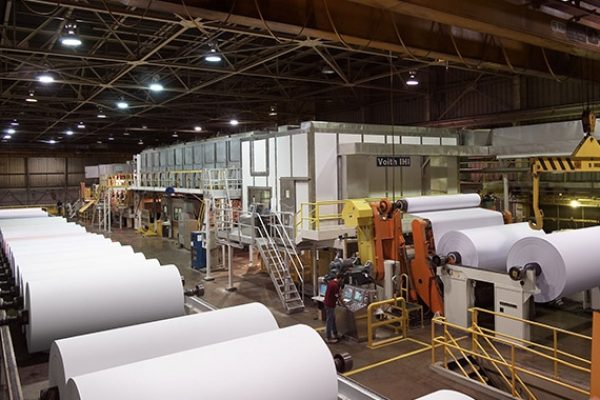Project Report For Paper Mill
Introduction
The Project Report For Paper Mill is as Follows.
A paper mill is a building or factory where paper is made from pulp, which can be generated from wood, recycled paper, or agricultural fibres. Paper making is a multi-stage process that includes pulping, bleaching, refining, paper creation, pressing, drying, and finishing.
The first process in a paper mill is pulping, which involves breaking down the raw material into fibres. Wood logs or chips are usually utilised, and the fibres are separated by mechanical or chemical pulping. Mechanical pulping is the process of grinding wood to separate the fibres, whereas chemical pulping is the process of treating wood chips with chemicals to dissolve the lignin and release the fibres.
During the pulping process, the pulp may be bleached to eliminate impurities and increase the brightness and colour of the paper. The bleaching process employs a number of chemicals, including chlorine and hydrogen peroxide.
The refined pulp is then combined with water to form a slurry, which is subsequently filtered to eliminate any leftover contaminants. The slurry is then placed over a moving wire mesh to drain the water and generate a wet sheet of fibres. The moist sheet is pressed again to eliminate excess water and increase density.
The partially dried sheet is subsequently dried, often with steam-heated rollers or cylinders, to eliminate any leftover moisture. Following drying, the paper may be subjected to further treatments such as calendaring (surface smoothing) or coating (the application of a layer of substance for specified qualities).
Finally, the paper is twisted into rolls or sliced into sheets, depending on the intended application and market need. Before being transported to clients, the final paper may undergo additional processing such as cutting, folding, or packing. Paper mills may manufacture a wide range of paper goods, such as printing and writing paper, packaging materials, tissue paper, newspaper, and speciality papers such as coated or textured sheets. Paper mills range in size and capacity from small-scale enterprises to enormous industrial complexes.

Types Of Paper Mill
Integrated Paper Mills: These mills are highly automated and self-sufficient, handling the full papermaking process, from pulping through the manufacture of a wide range of paper goods. They often possess their own pulp mills, power plants, and paper converting enterprises.
Pulp Mills: Pulp mills manufacture pulp, which is the raw material used in papermaking. They utilise mechanical or chemical pulping technologies to process wood logs or chips, and the resulting pulp is supplied to other paper mills or used internally by integrated mills.
Tissue Paper Mills: Tissue paper mills specialise in the production of numerous types of tissue papers, such as facial tissues, toilet paper, paper towels, and napkins. They use specialised gear and methods to produce soft, absorbent, and sanitary paper goods.
Newsprint Mills: Newsprint mills specialise in the production of newsprint, which is the paper used in newspapers and other printed publications. These mills create big rolls of lightweight paper with good runnability on high-speed printing machines.
Fine Paper Mills: Fine paper mills manufacture high-quality paper for printing, writing, and stationery. They make paper with smooth surfaces, high opacity, and excellent printability. High-quality wood fibres and innovative refining and coating techniques are frequently used in fine paper mills.
Market Potential Of Paper Mill
The size of the world’s pulp and paper market, estimated at USD 351.53 billion in 2021, is expected to increase by USD 0.72% of the year from 2022 to 2029, from USD 354.39 billion to USD 372.70 billion.
This industry is significant, forest-based, and the world’s largest. Paper and paper goods are typically made from wood and other materials such as bamboo, rice husk, wheat straw, and others. Wrapping paper, paper packaging material, writing paper, printing paper, tissue paper, rolls, speciality papers and other items are among the primary goods. This labor-intensive business is critical to both socioeconomic and sustainable environmental development. However, since digitalization and raw material availability fluctuate, the worldwide sector confronts growth problems.
The printing segment is expected to grow considerably throughout the projected period. The requirement is expected to grow as the education sector improves, including growing enrolment, improved literacy rates, and a rise in the number of schools and universities. Rising literacy rates, increased circulation, and a rise in the number of newspapers and periodicals are expected to promote newsprint demand growth.
